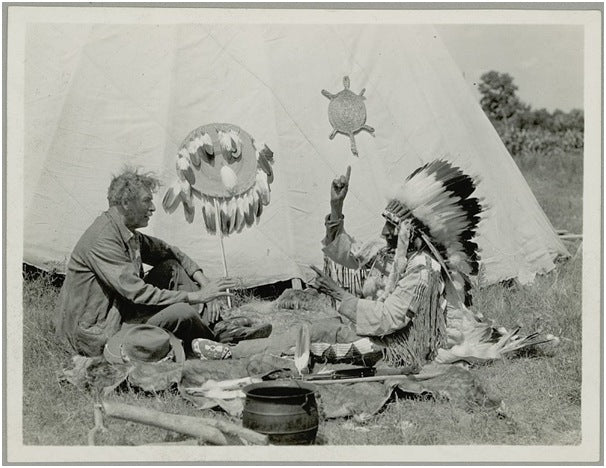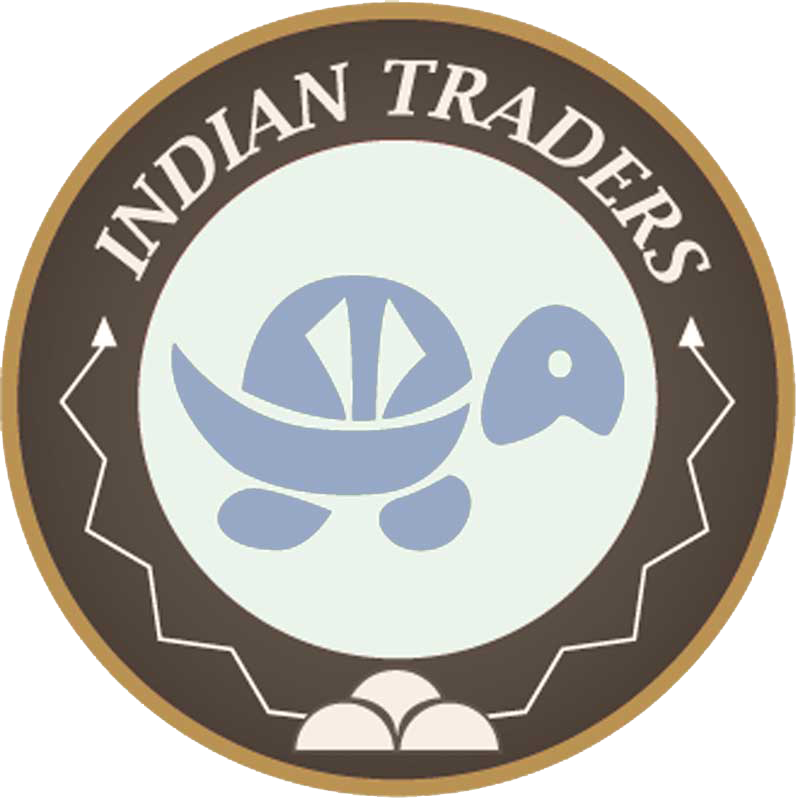
Just like the Native Americans themselves, and their beliefs, stories, traditions, Native American jewelry designs, and handicrafts, the languages of the American Indians are incredibly diverse and numerous. These languages are not remotely simple or primitive, and there is no single feature shared by all of them.
Fast Facts:
- When Europeans first made contact with the North American continent, there were thousands of languages spoken throughout the Americas and it is estimated that there were 300 unique native languages spoken in what is now the USA and Canada.
- None of the Native languages of the Americas had a writing system before European arrival, except for the Mayans and their Yucatan peninsula neighbors.
- Today, 150-175 indigenous languages continue to be spoken in North America – this of a total of 350 spoken languages overall in the USA.
- The languages spoken by North American Indians are grouped into 57 language families; these include as many as 25 which have no related language. Some of these languages have thousands of speakers; others have just a few hundred. Many are, sadly, now spoken only by elderly tribal members.
- 37 language families reside in the Rocky Mountains alone.
- The 20 native language families of California are more linguistically varied and diverse than the entirety of the languages spoken in Europe.
Why are these languages so diverse? The tribal nations likely separated from one another so far in the distant past that natural linguistic evolution played an enormous role.
Despite the leading anthropology theory that Native American ancestors migrated thousands of years ago in three waves from Asia and Siberia, across the Bering Strait, there has been no relationship found between any native language and any Asian language.
Spoken Language Families
A language family is a group of languages with a common origin and which has separated into different languages and dialects over time.
(For example, the Romance languages are part of the Indo-European language family and all derive from Latin (Spanish, French, Romanian, Portuguese); Russian is of the Slavic brand of this wider family and English is part of the Germanic branch, though it borrows much from Latin as well.)
Major Native American language families in the USA include
- Algonquin – e.g., Cree, Kahican, Narraganset, Shawnee, Blackfoot, Ojibwe, Cheyenne, Arapaho
- Iroquoian – e.g., Huron, Erie, Cherokee, Five Nations
- Muscogean – e.g., Creek, Seminole, Chocktaw, Chickasaw,
- Siouan – e.g., Omaha, Osage, Hidatsa, Dakota
- Uzo-Aztecan – e.g., Hopi, Ute, Paiute, Shoshoni, Comanche
- Athabascan – e.g., Navajo (Dine), Apachean languages
- Eskimo-Aleut – e.g., Yupik
- …and others
There are also many smaller families and some stand-alone languages that have no identified relationship with any other. Zuni is one of these “isolates”.
Historical Intertribal Communication
How did tribes Historical Intertribal Communication
How did tribes traditionally communicate with each other when they spoke different languages? For the Plains Indians, Plains sign language or “hand language” was used, and the Kiowa, in particular, became adept as hand talkers, while the Plains Crow took sign language to other tribes. Plains sign language eventually spread up to and throughout the plains of Canada, from Alberta to Manitoba.
Initial European Attitudes to Native Languages
The European colonizers had diverse attitudes to the indigenous languages of the Americas. Despite the suppression that was to come in the 1700s and 1800s, in the earliest days of the British colonies in the US northeast, many people made an effort to learn to communicate with the Native Americans, both by learning native words and phrases and by teaching them the same in English and Dutch. The Bible was even translated (over fourteen years) by a Puritan member of the Massachusetts colony into the Wampanoag language and the first Bible to be published in North America was the Eliot Indian Bible. Within many Latin American colonies, Spanish settlers and missionaries made the effort to learn the local language and communicate this way with the natives.
Interlanguage Borrowing
Native American groups and Europeans eventually borrowed vocabulary from each other; the extent of this was dependent on relations between the natives and the Europeans, with friendlier relations leading to more borrowed language. Some Native languages came to use borrowed words from English, French, Dutch, Spanish, Russian, and Swedish.
Many more words were adopted from native languages into English and other European languages, including:
- From Algonquin languages – chipmunk, hickory, caribou, moose, persimmon, pow wow, squash, raccoon, tomahawk, toboggan, totem, and more.
- From Eskimoan languages – kayak, igloo, and others.
- From Navajo (Dine) – hogan and others
Furthermore, many, many place names throughout North America are directly taken from native languages. Just a few of these are:
- Alaska – Aleut, “place the sea crashes against”
- Nebraska – Omaha, “flat river”
- Mississippi – Ojibwe, “big river”
- Minnesota – Dakota (Sioux), “cloudy water”
- Connecticut – Mohegan, “long river
- Oklahoma – Chocktaw, “red nation”
- Tennessee – Cherokee, their name for the Little Tennessee River
Did you Know? Other than English and Spanish, the most commonly spoken languages in four US states are Native:
- Navajo (Dine) in Arizona and New Mexico
- Dakota/Lakota/Nakota (Sioux) in South Dakota
- Aleut/Eskimo in Alaska
Da’ Diné bizaadish beeyánitti?
(Do you speak Navajo?)
Today, Navajo (Dine) is the most spoken Native American language, with 170,000 speakers. This is followed by (but with far fewer speakers):
- Yupik languages
- Dakota languages (Sioux)
- Apache languages
- Keres
- Cherokee
- Ojibwe
- Choctaw
- Zuni
- Pima
Preservation Efforts
While Native languages no longer flourish as they did centuries ago, they continue to contribute to a large volume of the linguistic diversity of the United States and Canada. However, most of them are on the verge of extinction, and more than 70% of US Native Americans today speak only English. Ongoing restoration and preservation efforts will be critical to ensure that the vast majority of these languages continue to be spoken in the second half of this century and beyond.
There has been a movement to reclaim and preserve Native languages in the USA fr the last 50 years. Initiatives include the Native American Head Start Preschools which run programs to teach young children their native tongues, The Dine College, Navajo Nation Radio, the Lakota Language Project, the Lakota Language Consortium, and many more.
Language is a thread that binds a culture – and it is sacred.
Support Native Americans at Indian Traders
Indian Traders is very proud to showcase and sell original handcrafted Native American bracelets, necklaces, and other jewelry made by Navajo, Hopi, and Zuni silversmiths. This directly supports these artists and their communities. We also offer a wide variety of merchandise, including Pendleton throws and blankets inspired by Native designs. Sales of some of these directly support the American Indian College Fund and other initiatives.
